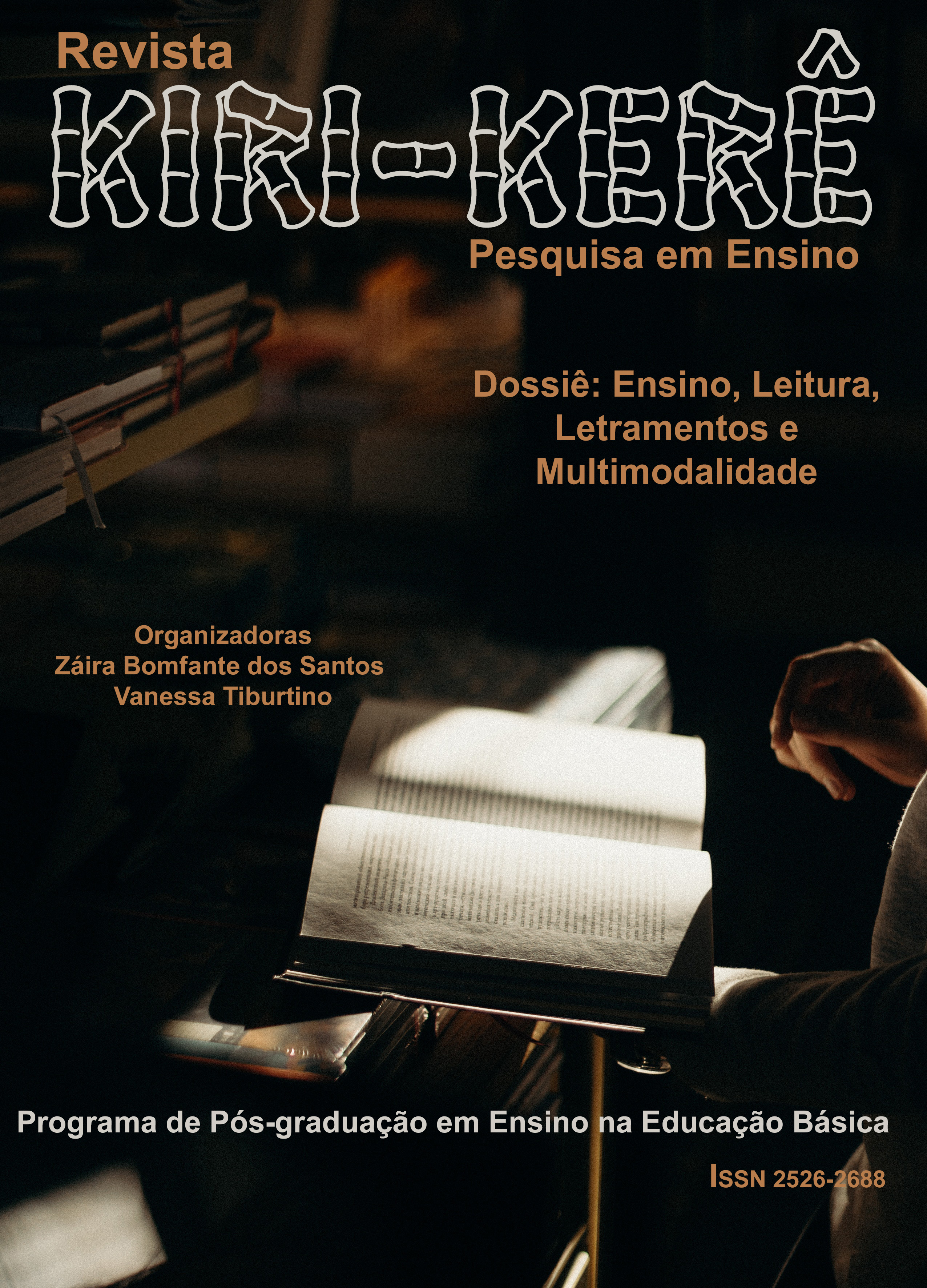Reading of the illustrations of “Barbazul” by Anabella López and the new meanings of this tale in contemporary
DOI:
https://doi.org/10.47456/krkr.v1i8.37559Keywords:
Tales, Oral tradition, Literature, Multimodality, BarbazulAbstract
The present work has as its theme the literary literacy of the illustrated book and the classic or traditional children's tales that are known by children, even before they enter school. The traditional tales were compiled by writers such as Perrault, The Brothers Grimm and Andersen, who became popularly known as authors of stories for children. Currently, there is a return to these tales that are recreated according to the questions of society and the ideals of a critical and emancipatory reading formation. Thus, the objective in this work was to analyze the illustrations of the work “Barbazul” (2017) by Anabella López, interpreting the choices made by the author/illustrator, in order to identify how she creates new meanings for this tale originally written by Perrault. For this, a literary review was carried out on the primordial narratives, on the historical context in which the story of "Barba Azul" was created and on the symbolic meanings of the tale. Then, based on the studies of Social Semiotics and Multimodality, the categories of representational metafunction in the visual were described, through them the illustrations of the book “Barbazul” were analyzed. Finally, the analysis data show that López (2017) created a new work, in which she seeks to subvert the moral of the original tale and the patriarchal precepts, in addition to paying tribute to the women victims of femicide.
Downloads
References
BARBER, McKenzie. Disney's Female Gender Roles: The Change of Modern Culture. McKenzie Barber. Honors Thesis. Indiana State University. 24 November 2015. Disponível em: http://scholars.indstate.edu/bitstream/handle/10484/12132/Barber_McKenzie_2015_HT.pdf?sequence=1&isAllowed=y
BETTELHEIM, Bruno. A psicanálise dos contos de fadas. 37ed.São Paulo: Editora Paz e Terra, 2018.
CANTON, Katia. Os contos de fadas e a arte. São Paulo: Prumo, 2009.
DOS ANJOS CARNEIRO, Gnaína; DE SOUSA LIMA, Luana; FERNANDES DOS SANTOS, Tayane; DA SILVA COSTA, Vivian; MONTEIRO ROCHA, Dheiky. A Ressignificação do feminino na contemporaneidade em Barbazul, de Anabeçça López. Revista de Letras - Juçara, [S. l.], v. 5, n. 01, p. 417-430, 2021. DOI: 10.18817/rlj.v5i01.2584. Disponível em: https://ppg.revistas.uema.br/index.php/jucara/article/view/2584. Acesso em: 11 fev. 2022.
COELHO, Nelly. A Literatura Infantil: teoria, análise, didática. 5ed. São Paulo: Editora Ática, 1991.
GOMIDES, Pollyanna. Era uma vez: contos de fadas, adaptação e intertextualidade em Caminhos da Floresta. Anais do XV Congresso Internacional ABRALIC. Rio de Janeiro. 07 a 11 agosto de 2017. Disponível em: https://abralic.org.br/anais/arquivos/2017_1522173972.pdf . Acessado dia 26 de março de 2020.
GUALBERTO, Clarice; PIMENTA, Sônia. Representações do feminino em protagonistas da Disney® sob uma ótica multimodal a partir da Semiótica Social. In: GUALBERTO, Clarice; PIMENTA, Sônia. (Org.) Semiótica Social, multimodalidade, analyses, discursos. São Paulo: Pimenta Cultural, 2019.
LÓPEZ, Anabella. Barbazul. Belo Horizonte: Aletria, 2017.
OS CONTOS DE CHARLES PERRAULT. Programa apresentado por: Renato Farias. Produção: Ciências & Letras, Editora Fiocruz e o Canal Saúde, 2017. Disponível em: https://portal.fiocruz.br/es/node/54444. Acessado dia 26 de março de 2020.
PERRAULT, Charles. Barba Azul. In: AVILA, Marina. Contos de fadas; edição comentada e ilustrada. Tradução de Tamara Queiroz. Rio de Janeiro, Editora Wish 2013.
RAMOS, A. M.; NAVAS, D. Narrativas juvenis: o fenómeno crossover nas literaturas portuguesa e brasileira. In: Elos: Revista de Literatura Infantil e Xuvenil, n.2., 2015, p. 233-256.
SANTOS, Záira; PIMENTA, Sônia. Da Semiótica social à Multimodalidade: a orquestração de significados. CASA: Cadernos de Semiótica Aplicada, v.12, n.2, 2014, p.295-324.
ZILBERMAN, Regina. A Literatura Infantil na Escola. 11ed. São Paulo: Global, 2003.
Downloads
Published
Issue
Section
License
The authors accept, when sending their works, the assignment of their copyrights.

